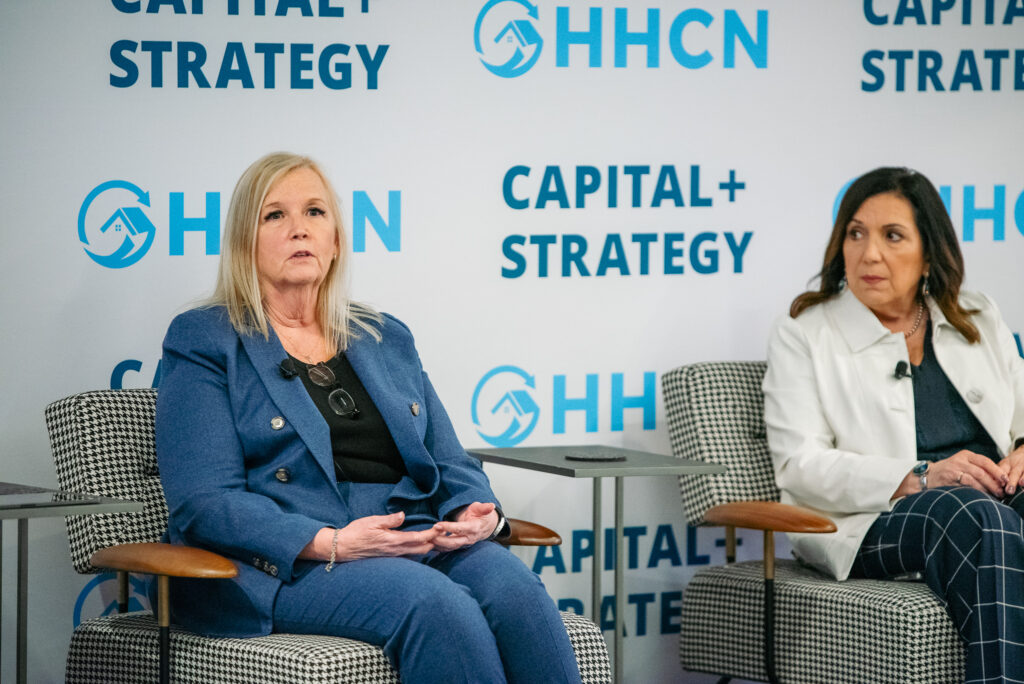Traditional home-based care companies aren’t the only ones serving seniors, while helping shift care away from brick-and-mortar settings. Adult day, PACE and continuing care retirement communities (CCRCs) without walls are a few of the care models working to meet the needs of seniors that want to age in place.
In many ways, these care models are natural allies to home-based care providers.
Nonprofit aging services organization Parker Health Group started out as a residential service provider. The company’s communities included nursing homes, assisted living and more.
Over the last 10 years, Parker has expanded into the home- and community-based care space.
“It’s really about how do we keep people safe, healthy and happy at home, versus having to move into an institutional setting because no matter how wonderful we are — who wants to live in a nursing home, or an assisted living?” Donna Silbert, chief strategy officer at Parker, said during a panel discussion at Home Health Care News’ Capital + Strategy conference last month.
For Parker, entering the home-based care space meant creating a network of care services that include health and wellness, adult day, virtual programming that addresses isolation, rehab-at-home, visiting physician services and more.
Right before the pandemic, Parker served roughly 1,200 seniors. Today, the company serves more than 10,000. A big majority of this population is being served through Parker’s home-based care service line.
In order to add another layer of care, Parker partnered with Visiting Nurse Association Health Group in 2022. The latter is the largest provider of nursing services in New Jersey.
Together, the two organizations formed the Parker Advanced Care Institute at VNAHG, a home-based primary care joint venture. As part of the collaboration, the organizations offer physician services and palliative care at home, serving 6,000 patients annually.
Currently, the Parker Advanced Care Institute at VNAHG is operated through the Centers for Medicare & Medicaid Services’ (CMS) ACO REACH model.
“That program is going extremely well for us,” Silbert said. “We’re waiting for our final notification about meeting our budgets and actually beating our budgets around that care. That enables us to use those funds to support all of the fee-for-service folks, which is not profitable today, and palliative is not profitable. We have great plans to continue to grow that, with the aim that if we can find a way to at least get sustainable, then that will be a huge win for us.”
CCRCs without walls
Having launched 20 years ago, Kendal at Home is a pioneer in the CCRCs without walls space.
“We have been, probably, one of just a few programs like this across the country for quite a few years,” Lynne Giacobbe, CEO of Kendal at Home, said during the discussion. “In recent years, we’ve seen an expansion of this type of program, primarily among the continuing care retirement communities who are looking to be able to serve older adults outside of the campus walls. This model has really begun to emerge, more recently, to serve those people that are really interested in what the communities have to offer, but are not looking to leave their home.”
Cleveland-based Kendal at Home is an affiliate of Kendal Corporation, a nonprofit senior housing provider that operates across eight states.
Broadly, the CCRCs without walls model lets seniors gain the benefits of traditional retirement communities while being allowed to stay in their homes.
At Kendal at Home, seniors are typically joining when they’re still healthy. The program then serves as what Giacobbe describes as a “general contractor” for seniors.
“We are there to coordinate services for them, and so we oversee everything,” she said. “In many ways, we sort of serve as a general contractor, bringing everyone together to help maintain them and their home.”
Giacobbe noted that the general contractor role in senior care is especially important because oftentimes people struggle to find the services they need.
As a result, Kendal at Home has had very little nursing home utilization. In fact, the program operated for 10 years before its first nursing home placement.
“We are very successful at helping people to remain in the place that they want to be,” Giacobbe said. “We’re not determining where they’re going to stay, we’ll serve them no matter where they are, and their care coverage goes with them, even if they do go into assisted living or a nursing home.”
Partnering with home-based care organizations is alway a key component of Kendal at Home’s care delivery model.
“We have many partners across the country that are providing services to members,” Giacobbe said. “We’re overseeing that care. We’re the contractor, we’re bringing the care providers in, and we’re working with many national companies, as well as local home care agencies. We’re also coordinating skilled services, and making sure that whatever might be needed in the home is being provided.”
The program also partners with organizations to provide things like home maintenance services, personal trainers and dementia practitioners.
When looking to collaborate with other organizations, Kendal at Home values partners that are customer-service oriented.
On its end, Parker likes to partner with companies that they align with in terms of culture.
“At the core is our culture, and making sure we’re like-minded,” Silbert said. “We’re very clear about what our mission is, and what we’re trying to accomplish together. I also think communication and transparency to the utmost level is critical to the success of any partnership that we have.”




